Eidos: The Unexpected Sketchbook
Archivist, Tilly Heydon, shares an unexpected find from the Archive inside a proof copy of Eidos, an art journal from 1950.
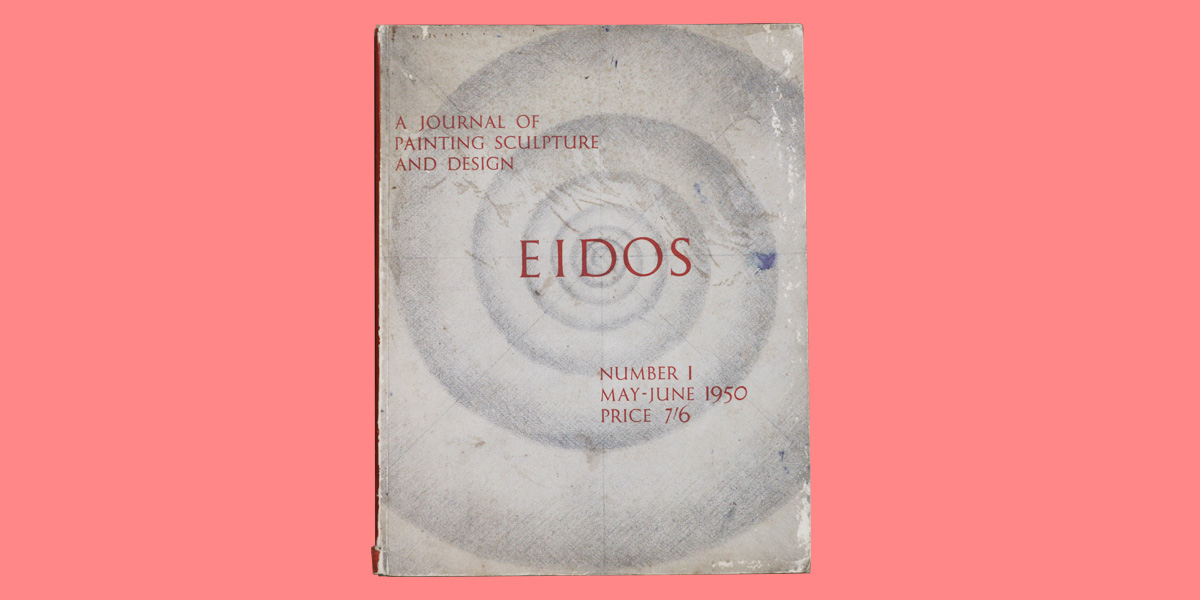
Cover of the Eidos proof copy with Barns-Graham's sketches inside
We have uncovered a very exciting find in the Archive. From the outside, it appears to be a copy of Eidos: A Journal of Painting, Sculpture and Design, a periodical that ran for three issues in 1950, and was edited by W. P. Gibson, Bernard Ashmoll, Sir Leigh Ashton, and John Rothenstein. However, once opened, it becomes apparent that it is actually a proof copy presumably was given to her husband, David Lewis, when he was preparing an essay on The Sculpture of Barbara Hepworth for Issue 2. The proof copy seems to have been adopted by Barns-Graham as a sketchbook, using the blank pages to experiment with abstract forms using blue ink, graphite, and orange and pink pencil. Thanks to their hiding place inside the pages of a facsimile magazine, the drawings have remained vibrant and lively.
In fact, some of these sketches are likely initial designs by Barns-Graham for a series of silk-screen printed table mats produced by Porthia Prints in 1955. Barns-Graham also used the book to record a list of works to be exhibited for her 1956 exhibition at the Scottish Gallery, Drawings from Sicily, Italy and Cornwall by W. Barns-Graham, and years later, she used it to sketch out the arrangement of her 1968 exhibition at The Richard Demarco Gallery, Edinburgh. The early 1950s were a financial struggle for Barns-Graham, and so it is unsurprising that she might have looked to save money on art supplies by repurposing the proof magazine as a sketchbook.
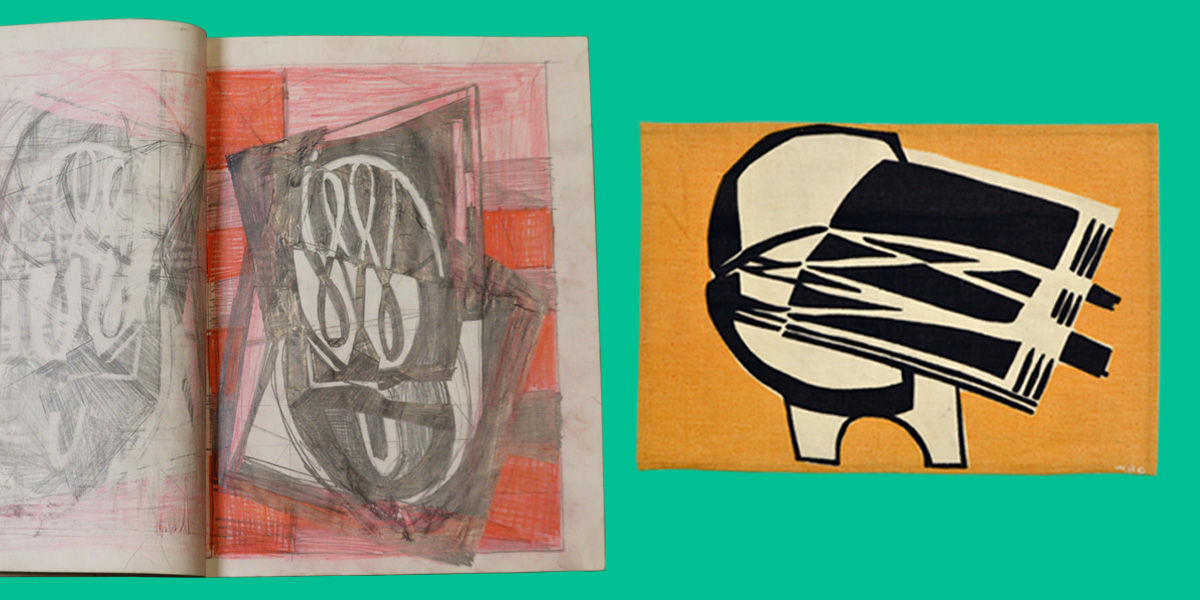
One of Barns-Graham's drawings from the Eidos Sketchbook with a tablemat designed by her and printed by Porthia Prints, 1955
From Proof Copy to Sketchbook
Although the Trust holds a number of Barns-Graham’s sketchbooks, it is rare that they are so well used. Barns-Graham had a habit of using only the first few pages or dismantling a sketchbook completely. Therefore it is a real treasure to have found such a well-used book. This is especially the case given the unusual format of this sketchbook. The fact that it started life as a proof copy of Eidos, given to David Lewis, sheds light on the working patterns of the married couple. Especially in these early years of married life (1949-1955), notes listing Barns-Graham’s artworks, or general jottings across books owned by the artist can be easily found in David Lewis’s hand. Indeed, he would often assist Willie with the shipping and sale of her artworks; even taking prospective collectors to view works in her Porthmeor Studio while she was away in Scotland or London. It is easy to imagine, then, that the couple might often share and exchange stationary supplies, especially considering the financial difficulties that they were facing at the time.
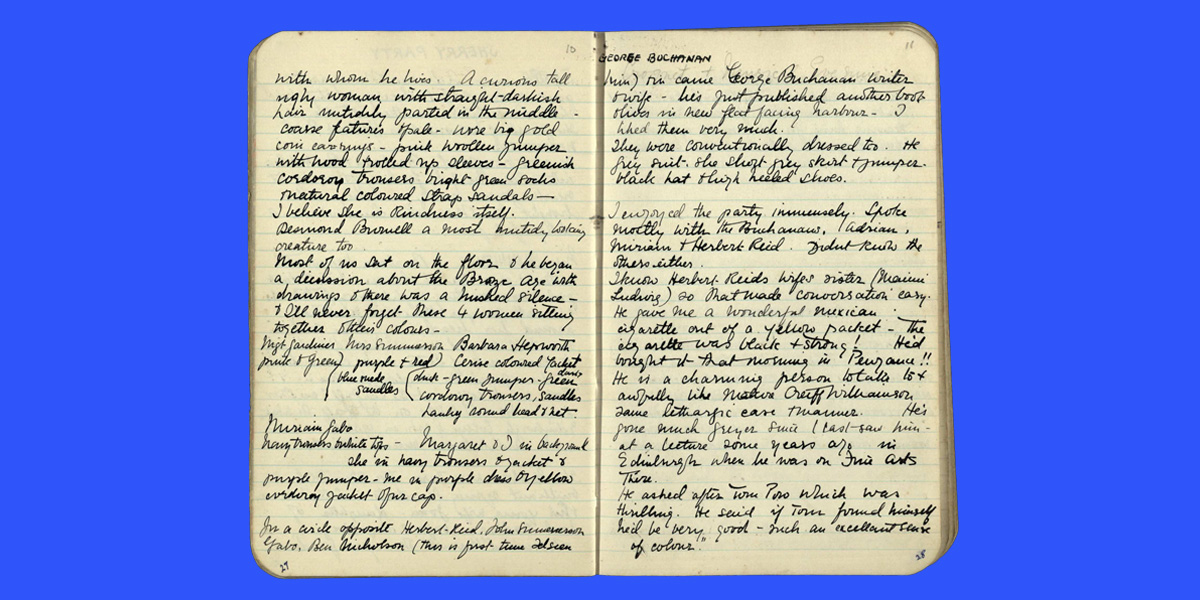
A page from Barns-Graham's notebook diary describing a sherry party at Little Parc Owles, 1940
Eidos and Ithell Colquhoun
The Eidos magazine itself has an interesting history that shares links with both Barns-Graham, and St Ives and its surroundings. Ithell Colqhoun, a surrealist artist who was based just twelve miles from St Ives, in Mousehole, was commissioned to design the cover, taking inspiration from the golden section. The designs are now held at the Tate Gallery Archive. Images of the preparatory drawing and the mock cover can be found on their website. Years later, Willie recorded a visit to Colquhoun in her 1983 diary, taking one of the collages she was working on at the time to show her.
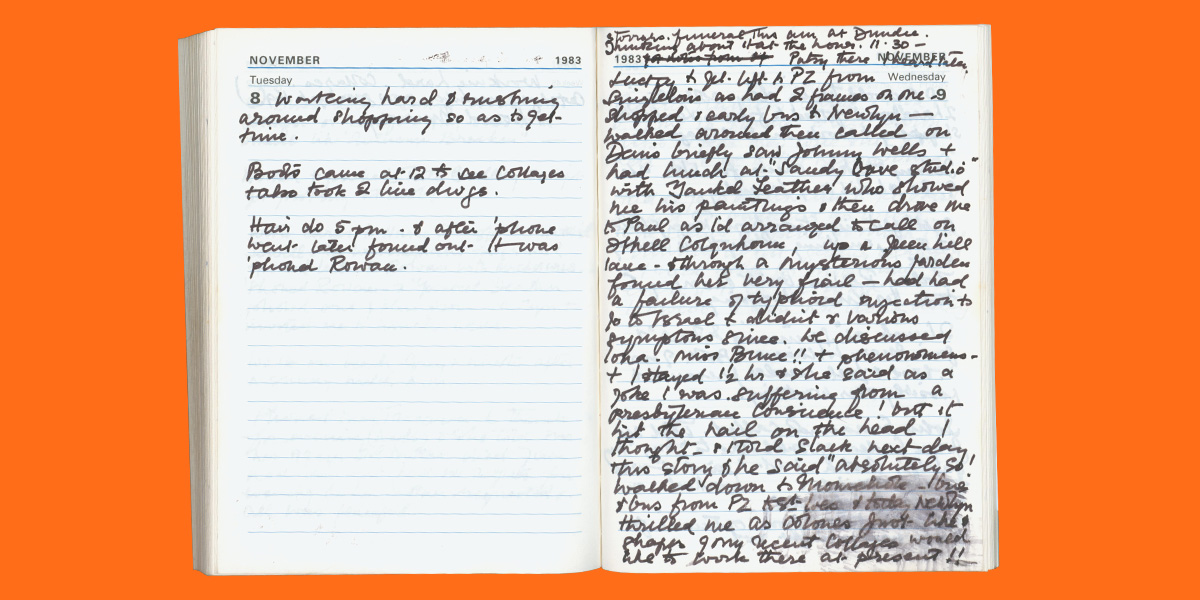
A diary entry from 1983 describing a visit by Barns-Graham to Ithell Colquhoun
Herbert Read and the St Ives artists
Issue Number One of Eidos featured an article by critic and art historian Herbert Read on Realism and Abstraction in Modern Art. Read had been working as a Professor of Fine Arts at the University of Edinburgh between 1931-1933, while Barns-Graham was studying at the Edinburgh College of Art. Their paths crossed; it’s not unlikely that Barns-Graham heard his lectures on modernism featuring, among others, the work of Barbara Hepworth, Picasso, and Henry Moore. In addition, she records attending a sherry party in 1940, hosted by Adrian and Margaret Stokes at Little Parc Owles, Carbis Bay, where Read was invited by Hepworth and Ben Nicholson as guest of honour. Willie records in her diary that while chatting, he gave her “a wonderful Mexican cigarette out of a yellow packet”. Read maintained friendships with the Nicholsons, the Stokes, and Naum and Miriam Gabo throughout the Second World War, exchanging correspondence between London and Cornwall.
As previously mentioned, David Lewis’s article about the sculpture of Barbara Hepworth in the second issue serves as another anchor point to the St Ives artist colony that was thriving in the 1950s. Although only lasting for three issues, the magazine illustrates the web of connections linking key players operating in the modern art movement in Britain in the early 1950s.

A list of Italian drawings in the Eidos Sketchbook with one of the drawings, Red Canyon Palinuro Campagna, 1955 (BGT153) and an invitation to her 1956 exhibition at the Scottish Gallery
Exhibitions Outlined
It is clear that Barns-Graham used the sketchbook over a number of years. Alongside the sketches and drawings, it includes a list of paintings and drawings sold at her 1956 exhibition Recent Drawings from Sicily, Italy and Cornwall at The Scottish Gallery, Edinburgh. The last entry is from more than a decade later. It is a scheme for hanging paintings at the 1968 exhibition, Four One Man Shows: Wilhelmina Barns-Graham, Denis Mitchell, Campbell Macphail and John Wells, shown at The Richard Demarco Gallery in Edinburgh. This exhibition came at a crucial time for Barns-Graham, after a period of scant representation in Scotland. The show was well received and given excellent coverage in newspapers and periodicals including the Edinburgh Tatler and Edinburgh and Borders Life.
With work on the archive of Wilhelmina Barns-Graham progressing well, it is hoped that more exciting finds, such as this sketchbook, will continue to be uncovered.
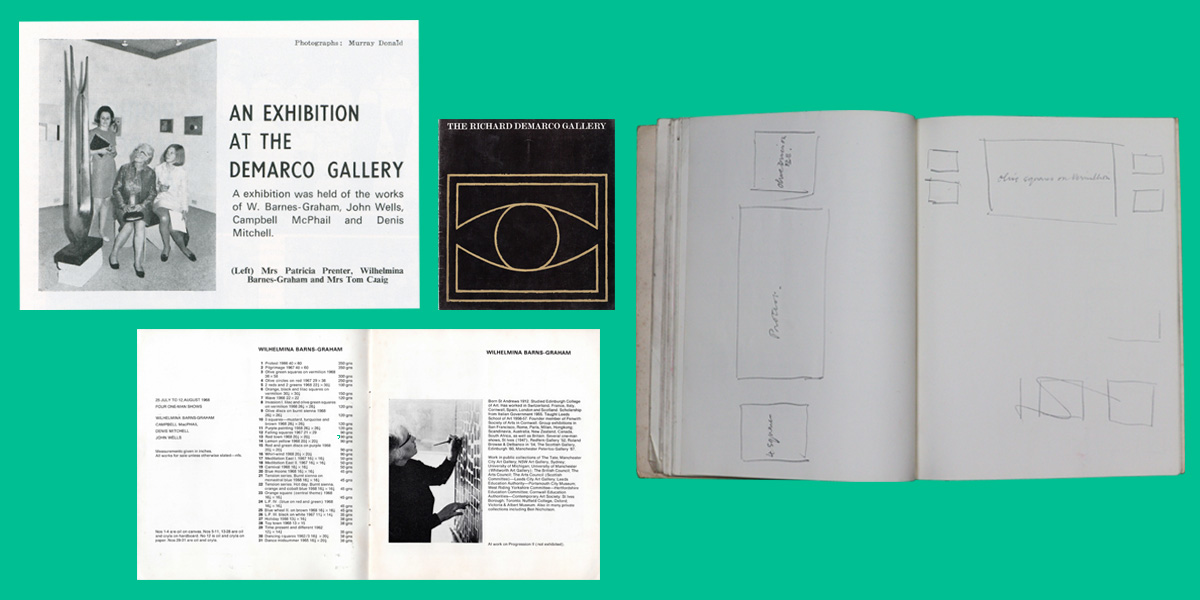
A selection of archive material related to Barns-Graham's exhibition at The Richard Demarco Gallery, 1968, (L to R): A cutting from Edinburgh and Borders Life; hang list and exhibition cover from the exhibition; a drawing of the exhibition layout inside the Eidos proof
